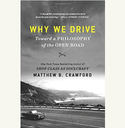Pornography, it seems, is now socially acceptable. It’s no longer generally taboo or frowned upon. One survey shows that 79% of men aged 18‒30 watch porn at least once a month and the same holds for 76% of women in the same age group. Porn is openly discussed in a range of media and casually mentioned in workplace conversations. Needless to say, this is a huge shift in our cultural attitudes towards pornography.
While there are many reasons for this cultural shift, it is worth noting that it has, in large part, been enabled and driven by technology. VCRs and cable TV, in their way, made access to pornography easier and more private, but it was the Internet and mobile devices that finally pushed pornography to its current level of acceptance. Just to give a sense of the size of this phenomenon, one popular pornographic video website had 28.5 billion visitors in 2017. That’s an average of 81 million visitors per day, with the majority of those visitors accessing the site on mobile devices. Over the course of that year, they streamed “enough data to fill the storage of all of the world’s iPhones currently in use.”
It’s hard to underestimate the impact this is having and will have on society. Many children first learn about sex from watching pornography, unconsciously allowing it to shape not just how they view sexual acts but confusing their understanding of the role of love and true intimacy in sex. Saint John Paul II clearly saw and spoke out about this:
There is no dignity when the human dimension is eliminated from the person. In short, the problem with pornography is not that it shows too much of the person, but that it shows far too little.[1]
What’s more, the risks posed by Internet pornography go beyond the traditional risks of pornography. It’s easy to imagine that Internet pornography is just the world’s largest stack of dirty magazines and videos accessible to everyone. But pornography is changing to leverage the possibilities offered by the Internet. It’s becoming more diverse, personalized, and more accurate in its simulation of intimacy. It’s mixing with social media to give viewers the sense that they know and are connected to the performers, allowing pornography to more easily substitute for true relationships. Live streaming blurs the line between pornography and prostitution while letting both performers and viewers never leave their homes. User forums allow individuals to post pornographic images of themselves or their partners for the world to see. The result is something that impacts those who watch it frequently more deeply, often causing addiction and impacting their ability to have real relationships.
Internet Pornography Addiction
Before delving into its many forms, it’s worth discussing whether Internet pornography really is addictive. Historically, the term “addiction” has been reserved to describe the abuse of alcohol, drugs, and other substances. While it is now common to jokingly describe eating, watching TV and the like as addictive, these casual uses of the term make it harder to consider seriously that non-substance abuse uses of the term refer to “real” addiction. Modern research, however, suggests that addictive behaviors—such as watching Internet pornography—can exhibit the same symptoms and even exercise the same neurological pathways as addiction to substances. These are not just bad habits that require ordinary willpower to break; they are powerful forces that many people struggle to control.
A 2015 literature review notes that “many [researchers] recognize that several behaviors potentially affecting the reward circuitry in human brains lead to a loss of control and other symptoms of addiction in at least some individuals.” Further, the literature review “leads to the conclusion that Internet pornography addiction fits into the addiction framework and shares similar basic mechanisms with substance addiction.” These basic mechanisms include structural changes to the brain that result in the numbing of response to normal pleasures, a heightened reaction to the addictive activity, and the erosion of willpower. These changes are self-reinforcing and make it difficult to engage with everyday life and to break out of the addictive cycle.
True addiction of this type can have a devastating impact on people’s lives. It can lead addicts to ignore their work, responsibilities, and relationships. These ill effects can continue even when the user understands the harm that the addiction causing. It can be extremely difficult to stop, as the addiction impacts users’ ability feel pleasure from normal, everyday activities. It also typically requires the user to engage in the addictive activity more and more and constantly seek out novel and more extreme versions to generate the same level of pleasure. In the case of pornography, it can lead users to view extreme or even violent pornography to satisfy their addiction, leading to shame, self-loathing, and withdrawal from relationships.
Terry Crews, an actor and former NFL star, has publicly described his struggles with pornography addiction and described its impact on his relationships in the following way:
Pornography really really messed up my life . . . It changes the way you think about people. People become objects, people become body parts, people become things to be used rather than people to be loved. Pornography is the intimacy killer. It kills all intimacy. Every time I watched it I was walled off, it’s like another brick that came between me and my wife.
The Physical Impact of Porn Addiction
Gary Wilson, a researcher, writer, and founder of an anti-pornography website, gave an influential TEDx talk in 2012 wherein he described the increased incidence of erectile dysfunction (ED) and its link to Internet pornography. While scientific literature attests to this sharp and surprising rise in erectile dysfunction for otherwise healthy men under 40, the causality of this phenomenon is harder to discern. Wilson suggests that a growing group of men who have voluntarily given up Internet pornography[2]—whom Wilson has tracked in anti-pornography online forums—and consequently recovered from ED show the link.
Online anti-pornography movements are fascinating because they are typically not linked to moral or religious objections to pornography. Instead, members seem to be motivated by the harm which pornography has effected in their lives, whether from the repercussions of addiction or ED. Men in these forums regularly cite a reversal of their ED and an overall improvement in their lives after giving up Internet pornography and masturbation. It’s common to see men say that unrelated conditions—including depression, ADHD, procrastination, and trouble concentrating—disappear when they stop using pornography.
Wilson suggests that the rise in ED coincides with the widespread accessibility of high-speed Internet, which has changed the availability of pornography from a small selection of images or video tapes to an endless stream of high-definition video. Moreover, the large selection of pornographic materials fuels the addiction cycle by allowing the user to continually search for novelty. He notes that heavy users of Internet pornography constantly search for new materials, will have a large number of browser windows open at once, and will click and fast-forward through videos looking for novel, surprising, or shocking material.
These same men, when faced with a real-life sexual situation, often have trouble maintaining interest and arousal. Many find that they need to replay pornographic images in their minds in order to perform sexually with a real partner. They feel overwhelmed by the physical reality or frustrated at their inability to fully control the situation. Many say that they find pornography more exciting than contact with a real person.
So far, it appears that giving up Internet pornography can reverse these negative effects. Reports in various forums suggest it can take anywhere from a few weeks to several months to recover. Alarmingly, though, it often takes younger men, who had access to high-speed Internet while they were teenagers and while their brains were more plastic, longer to recover, suggesting that the use of Internet pornography had a larger impact on their brain development.
Selling Intimacy
It’s not uncommon for prominent porn stars to have a very active presence on the social network Instagram, despite the fact that Instagram does not permit the posting of explicit images and video. Certainly, these performers will often post provocative images at the edge of what is allowed, but just as often they post images of themselves in seemingly normal situations. With friends and pets, eating meals, or pursuing their hobbies. Thus these performers offer glimpses into what they say is, and very well may be, their real lives.
In many ways, this approach is the same as that used by celebrities of all sorts. It’s a switch from promoting their work to promoting themselves. By allowing their fans to feel close to them, they encourage an emotional connection. That emotional connection creates more loyal fans that will seek out their work over that of their competitors. In many ways, this is an effort to counteract the constant quest for novelty that the Internet enables, by offering something deeper and more compelling: a feeling of intimacy.
For many porn stars, this approach is working. They have active fan bases on different social media platforms. They can offer their videos on websites that they control, giving them a larger portion of the profits. They can sell merchandise and endorse products (some performers actually sell lingerie that they have worn while performing in videos to dedicated fans). Some even sell access to more intimate social media settings, like private Snapchat accounts, where they have limited interaction with fans and post images and videos that only paying users can see. These performers are leveraging the full interactive potential of the Internet as it exists today to promote themselves.
In some ways, the fact that these approaches work is heartening. Better than any other medium, Internet pornography succeeds in stripping porn stars of their humanity. Many sites allow users to perform detailed searches for performers on the basis of physical traits and the acts performed, encouraging users to fully objectify the performers. In contrast, the more personal and interactive approach of establishing “relationships” via Instragram and Snapchat is a testament to users’ desire for intimacy. This desire for a human connection—for love—is one that should be encouraged, just not in this distorted form, because, ultimately, these approaches are only a simulation of intimacy. Carefully curated glimpses into performers’ lives may make the fans feel close to the performers, but there can be no real connection. This feeling of closeness requires no risk on the part of the fan. There is no demand for reciprocal vulnerability and, therefore, no possibility of rejection. A performer can control his or her image assiduously, taking care to present him or herself carefully, avoiding showing any human weaknesses that might disappoint. Authentic relationships require both people seeing, knowing, and fully accepting each other.
The very real risk is that these simulated relationships may offer enough of a feeling of connection to enable a user to avoid the need for real relationships. Thus, individuals who might have trouble forming relationships could lead an ultimately isolated existence propped up by the pretense of intimacy. Many forms of social media featuring celebrities pose this risk to some degree, but pornography combined with social media can seemingly fulfill both emotional and sexual desires, making them a more compelling and harmful lure.
Live Streaming
At first, the Internet served as a distribution mechanism for images and pre-recorded videos. But as technology has matured it has become possible to easily stream live video to a large number of viewers with nothing more sophisticated than a webcam, laptop, and high-speed Internet connection. As is seemingly always the case with new technology, pornography is one of its first applications.
Many sites offer live video feeds of women, men, and couples. One common format is that of a show presented to a large number of viewers. These video streams are linked to a chat room where viewers can make comments visible to the performers, who will often respond in turn. These sites also offer a way for users to give monetary tips. Various schemes are used to encourage tipping, such as the performer engaging in a specific act if enough tips are received or controlling the intensity of Internet-connected sex toys the performer is using based on the number of tips received.
Another format is a private video chat session. In this format, a single user video chats directly with a performer. They can talk with the performer and, if they desire, enable their video as well so that the performer can see them. Here, the user typically pays per-minute for the video chat.
These live video chats are blending pornography with what is typically offered at strip clubs and, in many ways, by prostitution. It is the logical conclusion for the interactivity enabled by the current Internet technology.
Future Technology and Emerging Trends
The next wave of technology is coming. Virtual reality, which uses goggles to create an immersive, 3d environment, and augmented reality, which uses semi-transparent glasses to insert 3d graphics into the real world, have received billions of dollars in funding[3] and appear to be on the verge of mainstream acceptance. It’s inevitable that these technologies will be used for pornography, and there are likely other successive technologies which will further change pornography. Pornography and technology have had a symbiotic relationship for decades, with each pushing the other to evolve, change, and gain widespread acceptance. As technology continues to push to virtually connect people and create more convincing simulations of reality, the danger from pornography is going to continue to grow.
There is some hope, however, from the small but growing numbers of groups that are rejecting pornography and the larger groups starting to confront the more general problems of technology distraction and addiction. For example, the next versions of both Android and iOS, the two leading mobile operating systems, will include features to help users limit and control their use of apps, including filtering and restricting access to explicit content. Even if these efforts fail to reverse the general acceptance of pornography, perhaps there will at least be support for those most vulnerable and trapped.
Karl MacMillan lives in Maryland with his wife and four children. He is an experienced software developer, executive, and entrepreneur that most recently built a service to help parents and teens detect and respond to inappropriate content on social media.
[1] John Paul II speaks to the dignity of the human body in general and the problem of pornography in specific in his groundbreaking Theology of the Body. This issue of Humanum features an excerpt from his appendix on “The Ethos of the Body in Art and Media.”
[2] One prominent example is the Reddit group NoFap, which has over 300,000 members.
[3] Magic Leap—an augmented reality company which has yet to announce a product—has received 2.3 billion dollars in funding.
Keep reading! Click here to read our next article, Pornography: More "Real" Than Reality Itself



